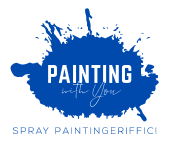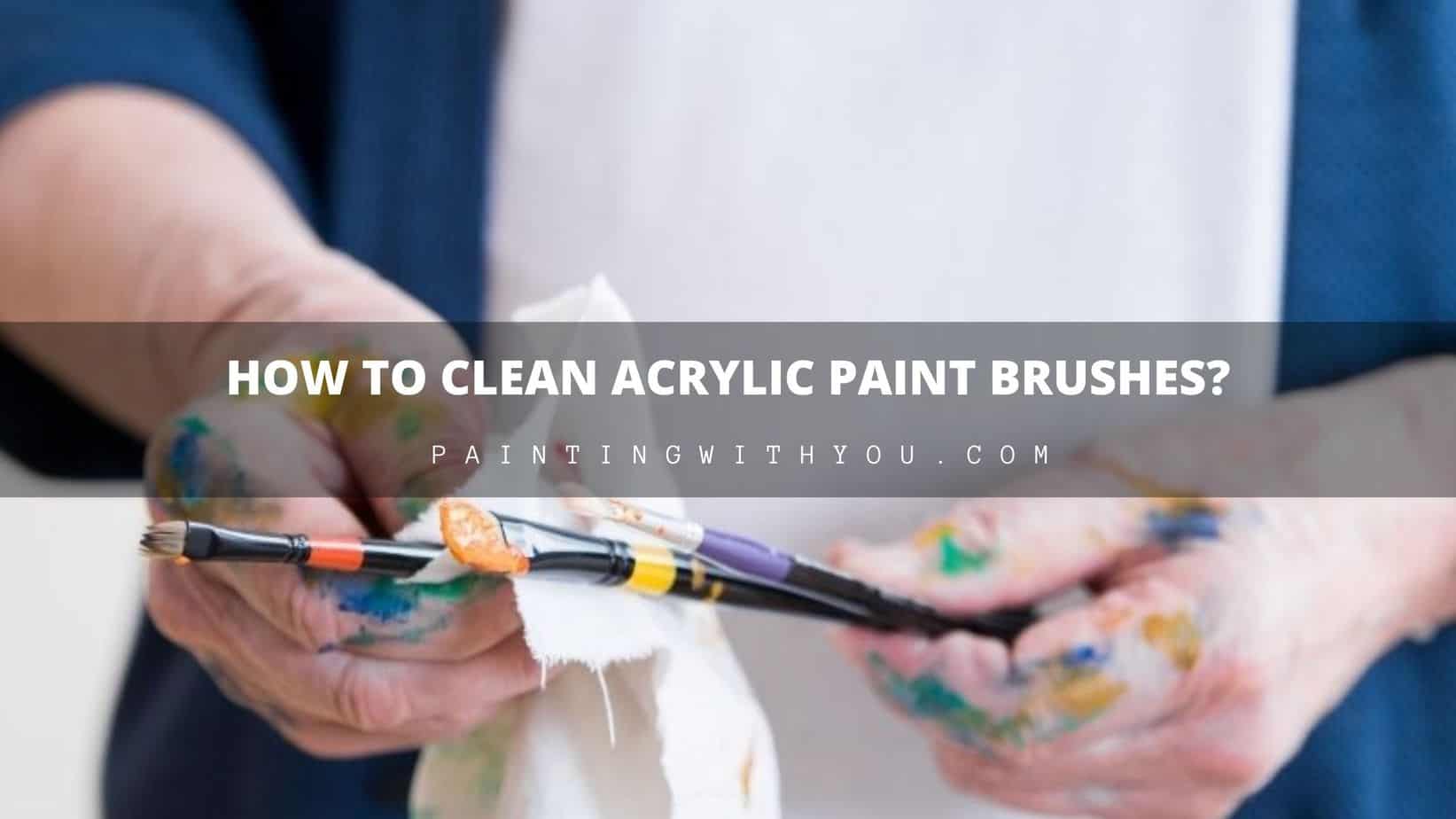Typically, all you need is water to clean any acrylic paint brushes. It really is that simple! Keep your brushes wet in a cup of water as you use them, and clean them thoroughly when you are done painting for the day.
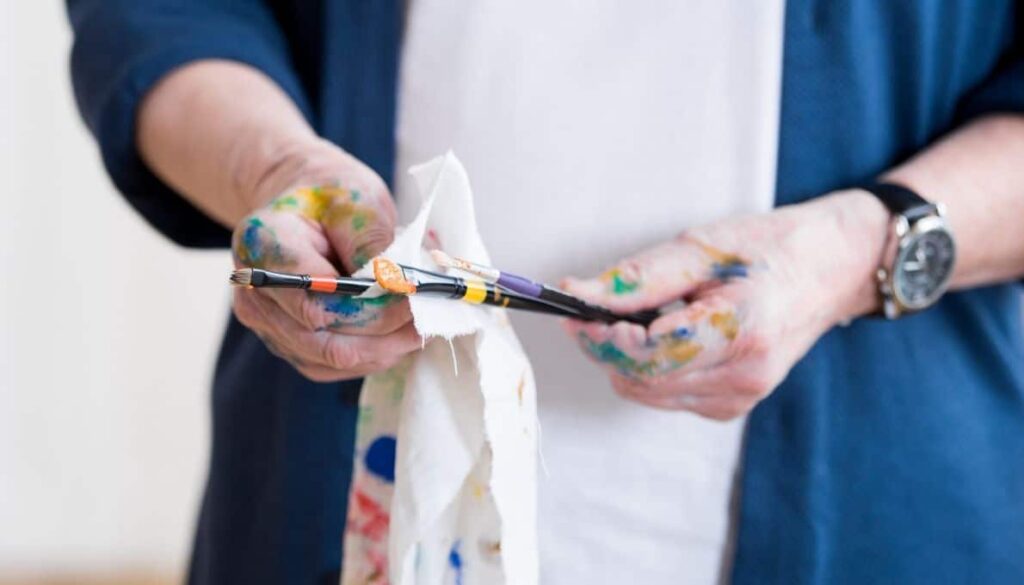
How to Remove Acrylic Paint From Brushes – 14 Tips
Here are some useful tips that might come in handy to keep your brushes clean and extend their life significantly.
Some tips I will mention will be obvious but for some you maybe haven’t heard about so far. Acrylic painting can be a mess and hopefully at the end you will learn something new
1. Use Warm water
Water is all you need to clean wet paint out of your brushes. Warm water is the most preferable.
2. Keep your brushes clean as you go
If you are finished painting with a brush or finished using a certain color, have a cup of water nearby to dip the brush in.
You should swirl the brush around in the water until the paint completely diffuses out of the brush. Then, wipe the brush onto a paper or cloth towel to ensure the paint is completely out of it.
Pro tip: If you are painting for hours on end, consider cleaning out your brushes every few hours to ensure no paint has dried in the bristles.
3. Change your water regularly
Fresh water will allow the paint to diffuse into the water more effectively.
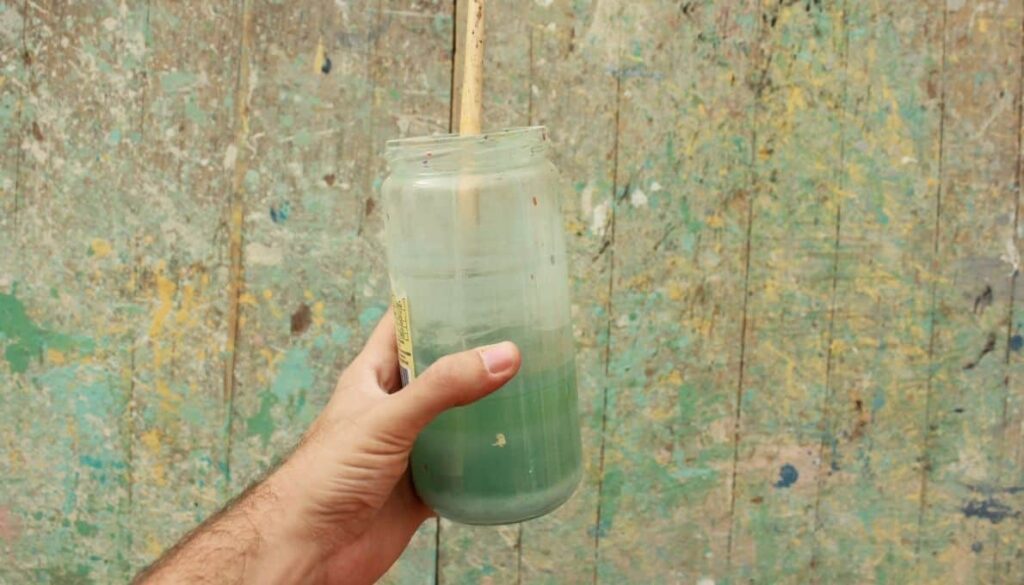
4. Keep brushes wet
If you can’t clean your brush right away, at least put it in a cup of water until you are ready to fully clean it.
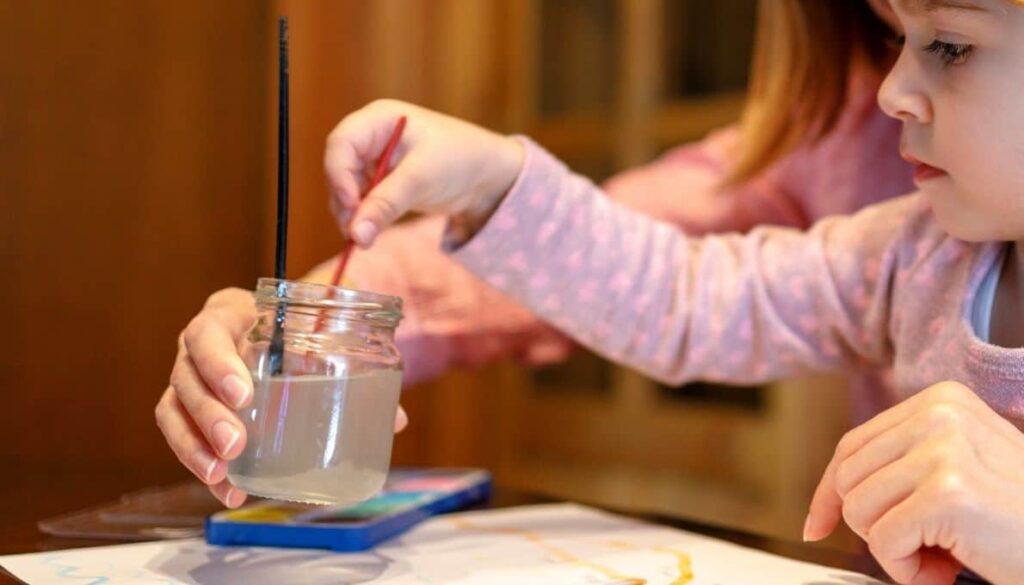
5. Clean your brushes as soon as possible
At the end of your project, clean your brushes right away. Acrylic paint can begin to dry very quickly, so time is working against you.
As soon as you finish your project, take all your brushes to a cleaning area and rinse them fully with water.
6. Use plastic wrap
If you cannot clean your brushes right away or want to keep the paint already in the brush, you can wrap the end of the brush in plastic wrap and store it in the fridge. Seal the wrap completely around the brush so no air can get in and dry the paint out.
7. Use running water
The best place to clean out your brush is in a utility sink or a slop sink under warm, running water. Be sure to wipe the sink down with a paper towel or rag to get any paint drops off when you are finished.
8. Use a brush for paintbrushes
Use a wide-toothed comb or an actual paintbrush cleaner to brush the paint out of your paintbrush. Metal teeth will be the most useful for getting off any tough, dried-on paint.
Pro tip: Run it from the heel of the brush to the end (just like brushing human hair). Do not brush against the bristles or you may damage the bristles irreparably.
9. Get the excess water out
Flick the paintbrush into a bucket or into the grass after you are finished rinsing it out. Use a motion like you are cracking a whip with a bigger paint brush, or brush bristles against the tip of your finger for a smaller paintbrush.
10. Use soap and water
If you are still struggling to remove all the paint, you can use a mild soap, like dishwashing detergent, to clean the paint off.
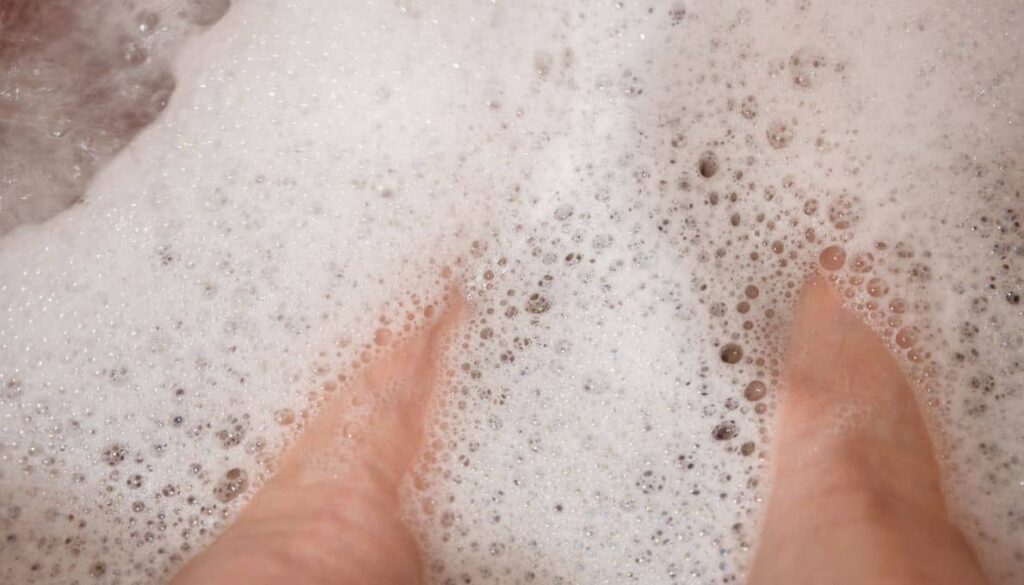
11. Use vinegar
If the paint has dried on or is not coming off easily with water, then you can soak the brush in warm vinegar and rinse it in warm water.
Alcohol also helps to clean brushes with tough, dried-on paint, but it can be very rough on synthetic bristles. Use it sparingly and be sure to rinse your brush completely after soaking it in alcohol for a few minutes.
Pro tip: Use a conditioner afterwards, too, to restore moisture to the bristles and keep them from drying out.
12. Use conditioner
This is a preventative step that keeps your brushes in tip-top shape and keeps the paint from getting stuck at the base of the bristles. Regularly use conditioner on your brushes to make cleaning easier and keep the bristles in good condition.
You can use regular hair conditioner or purchase some made specifically for paint brushes.
13. Use your fingernails
If there is any dried paint on the outside of the bristles, you can use your fingernails to scrape it off.
14. Use a painter’s tool
A six-in-one painter’s tool or a putty knife can also be a useful scraping mechanism to get dried paint off the paint bristles. Just don’t scrape too hard or you may curl the bristles in the same way you can curl ribbon with the edge of a scissor.
15. Cleaning Acrylic Brushes for Different Types of Paints
I adjust my approach slightly when cleaning brushes used for:
- Heavy body acrylics – More paint residue builds up so I massage bristles longer with soap
- Acrylic inks – Rinse promptly since inks stain bristles easily
- Acrylic mediums – Soak for 10-15 minutes in water before washing to loosen dried film
Understanding the qualities of my paints allows me to tailor my cleaning techniques for the best results.
Common Mistakes to Avoid
As a beginner, it’s easy to make errors that can ruin brushes. Here are some I watch out for:
- Forgetting to clean brushes before paint dries
- Using hot water that causes acrylics to set permanently
- Leaving brushes to dry upright or resting on bristles
- Storing dirty brushes for long periods between uses
- Using harsh detergents that strip natural bristles
Staying mindful helps me avoid these pitfalls and keep my brushes in optimal condition.
After cleaning your Acrylic brushes, you need to store them well.
After cleaning your brushes, store them in a way that preserves the shape of the bristles. Usually brushes come with cardboard, plastic or fabric container made specially to store them. Save this and use it to keep your bristles sharp.
If you lost the original container, there are a few DIY ways to store your brushes.
- For a medium-sized brush, you can wrap it in newspaper and fold down the end to keep the tips sharp and prevent stray hairs. Just be sure you fold the end over past the tip of the brush. Otherwise, you might curl the ends and ruin the brush.
- For smaller brushes, you can reshape the wet bristles to a sharp point and allow them to dry that way.
I check my frequently used brushes weekly for stray dried paint or damage. Well-cared-for brushes should bounce back to their original shape after cleaning.
Pro tip: Use synthetic brushes. Synthetic bristles are cheaper, longer-lasting, and easier to clean than natural fiber brushes.
Read my Related post next: How to protect Acrylic painting?
How To Remove Dry Acrylic Paint From Paintbrush?
The best way to address this issue is to prevent it by cleaning your brushes after every use, but there are a few options of you find yourself with paint caked-on to your paintbrush.
For brushes encrusted with thick, dried acrylic:
- Soak bristles in a 50/50 mix of warm water and white vinegar for 15-30 minutes
- Gently massage with soap, then rinse and repeat until supple
- Brush restorers like The Masters Brush Cleaner can aid in removing dried paint
Pro Tip: If any paint is dried onto the hairs around the edge of your brush, just cut those hairs off as close to the heel of the brush as possible.
How Do You Restore Artist Paint Brushes?
Depending on the type of damage done to a paintbrush, you can use cleaners, conditioners, or trimming techniques to restore an old brush. If dried-on paint is involved, refer to the cleaning tips above using water, vinegar, or mineral spirits. You can also condition your bristles to keep them soft.
If there is a bend at the end of the brush or many stray hairs sticking out, trim these down. You can cut off the tip of the brush if it was laid against the bottom of a container for too long and it will still be useable. If it was not stored correctly or cleaned too harshly, you may need to trim the stray hairs around the edge. Trim them down as close to the heel as possible.
Related Questions
Is it OK to clean acrylic paint brushes in the sink?
Yes, it’s totally ok. Just make sure you clean all the paint out of the sink’s inside and off the faucet after you finish. It is a good idea to use a utility sink of some sort and wipe it down with a paper towel when you are finished.
Can i clean acrylic paint brushes with vinegar?
You can use vinegar with Acrylic paint brushes. Warm up the vinegar using a microwave or stove for severely caked-on paint. Then, rest the paintbrush in warm vinegar for about twenty minutes. Rinse the brush out with warm water and dry it out.
What do you clean acrylic brushes in?
I clean my acrylic brushes in containers filled with cool water. I use plastic jars or buckets to fully submerge the bristle end of the brush in the water to loosen the paint. I avoid using hot water, as heat will cause acrylic paint to set permanently in the bristles.
What liquid is used to remove acrylic paint from brushes?
I use mild liquid dish soap or brush shampoo to remove acrylic paint from my brushes. I gently massage a small amount into the bristles and rinse thoroughly until the water clears. The soap helps break down the acrylic polymers so the paint can be washed away with water.
Can you use dish soap to clean acrylic brushes?
Yes, I regularly use dish soap to clean my acrylic brushes. Dish soaps are effective at cutting through paint while still being gentle enough for brush bristles. I make sure to thoroughly rinse the brushes after washing to remove all soap residue. An alternative is a specialty brush shampoo or soap formulated just for paintbrushes.
